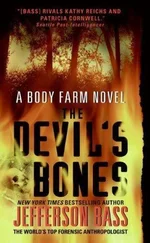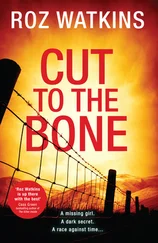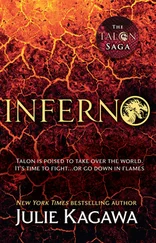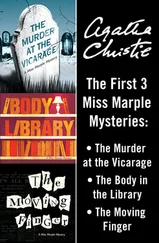“I’m glad y’all are leading the way,” I told the backs of the lumbering lawmen.
“Be hard to find on your own,” said the sheriff.
“True, but not what I meant,” I replied. “I figure if anybody’s going to get snakebit, it’ll be the guy walking in front. Or maybe the second guy, if the snake’s slow on the draw.”
“Maybe,” conceded Meffert. “Or maybe the two crazy fools sticking their hands down in the rocks, rooting for bones.”
“Dang, Bubba,” I said, wincing at the image he’d conjured. “ That’ll teach me to be a smart-ass.”
“Man,” muttered Tyler after a hundred slow yards. “Every step here is a broken ankle waiting to happen.” The gear he was lugging—a big plastic bin containing two cameras, paper evidence bags, latex gloves, trowels and tweezers, clipboards and forms—couldn’t have made it easy to see his footing or keep his balance. The trees were too sparse and scrubby to serve as props or handholds; about all they were good for was to obscure the footing and impede progress.
“Bubba,” I huffed, “you came out with the guy that found the bones?”
“Yup,” Meffert puffed. The TBI agent appeared to be carrying an extra twenty pounds or so around his middle.
“He said he was hunting fossils,” I went on. “You believe him?”
“Seemed believable. Name’s Ro- chelle . Some kind of engineer at the bomb factory in Oak Ridge. Environmental engineer. Maybe that’s why he likes poking around old mines. Fossils plus acid runoff—a twofer for a guy like that, I guess. There’s damn good fossils right around the bones. You’ll see in just a minute.” He paused to take a deeper breath and reach into a hip pocket. “Yeah, I believe him,” he repeated, mopping his head and neck with a bandanna. “He came into the sheriff’s office and then brought us all the way back up here. No reason to do that, except to help, far as I can see. Hell, that shot his Sunday right there.”
“You never know,” I said. “Sometimes a killer will actually initiate contact with the police. Insert himself in the investigation.”
“Return to the scene,” grunted the sheriff.
“Sometimes more than that, even,” I said. “An FBI profiler I worked with a few years back told me about a California killer who spent a lot of time hanging out in a cop bar, making friends, talking about cases. Ed Kemper—‘Big Ed’—was the guy’s name. When Big Ed finally confessed to a string of murders and dismemberments, his cop buddies thought he was joking.”
Meffert shrugged. “This Rochelle guy seemed okay,” he said. “He’s got a high-level security clearance, for whatever that’s worth. But like you say, you never know.”
Fifty yards ahead, I saw yellow-and-black crime-scene tape draped around an oval of scrubby foliage and rugged shale. “Did somebody actually stay out here overnight to secure the scene?” I asked.
Cotterell made a guttural, grunting sound, which I gradually realized was a laugh. “ Secure the scene? Secure it from who, Doc?”
MEFFERT WAS RIGHT ABOUTthe fossils. Just outside the uneven perimeter of crime-scene tape lay a flagstone-sized slab of black shale, imprinted with a lacelike tracery of ancient leaves. Beside it, angling through the rubble, was a stone rod the length of a baseball bat. Its shape and symmetry made it stand out against the random raggedness of the other rocks, and I stooped for a closer look. Diamond-shaped dimples, thousands of them, dotted the entire surface of the shaft. “I’ll be damned,” I said to Tyler. “Look at that. A lepidodendron.”
“A what?” Tyler set down the bin and squatted beside me. “Butterfly fossil?”
I nudged it with my toe, and it shifted slightly. “Close, but no cigar. Your Latin’s rusty.”
He snorted. “My Latin’s nonexistent.”
“Butterflies are Lepidoptera—‘scaly wings.’ This is a lepidodendron—‘scaly tree’—a stalk from a giant tree fern. Ferns a hundred feet tall. Carboniferous period. That plant is three hundred million years old if it’s a day.”
Tyler grasped the exposed end of the fossil and gently tugged and twisted, extricating it in a succession of rasping clinks. He sighted along its length, studying the intricate geometry of the diamond-shaped pattern. “You sure this is a scaly stem? Not a scaly snake?”
“Those scales are leaf scars,” I said. “Also called leaf cushions. But they do look like reptile scales, for sure. Actually, circus sideshows used to exhibit these as fossilized snakes. You’re a born huckster, Tyler.” I stood up, scanning the ground ahead and catching a telltale flash of grayish white: weathered bone. “But enough with the paleo lesson. We’ve got work to do. Let’s start with pictures.” Tyler laid the fossil aside and opened the equipment bin.
A few years before—when I’d first started working with the police on murder cases—a detective at the Kansas Bureau of Investigation had taught me a crucial forensic lesson: You can never have too many crime-scene photos, because working a crime scene requires dismantling it; destroying it. The KBI agent’s approach to crime-scene photography sounded like something straight from Bonnie and Clyde’s bank-robbery playbook: “Shoot your way in, and shoot your way out”—start with wide shots, then get closer and closer, eventually reversing the process as you’re finishing up and leaving the scene. Tyler had been quick to master the technique, and even before we stepped across the tape at the strip mine, he had the camera up and the shutter clicking. It wasn’t unusual for Tyler or me—sometimes both of us—to come home with a hundred 35-millimeter slides from a death scene, ranging from curbside shots of a house to frame-filling close-ups of a .45-caliber exit wound.
As Tyler shot his way in, so did I, though I was shooting with my eyes and my brain rather than a camera. The pelvis: female, I could tell at a glance; subadult; probably adolescent. The size: small—five feet, plus or minus. As I zoomed in on the skull, I reached out to pluck a seedling that was growing beside it and obscuring my view. As I tugged, though, the skull shifted—bone grating against rock—and I froze. “I’ll be damned,” I said, for the second time in minutes. The seedling, I realized, wasn’t growing beside the skull; it was growing from the skull—from the left eye orbit, in fact—something I’d never seen before. Wriggling my fingers gently beneath the skull, I cradled it, then lifted and twisted, tugging tendrils of root from the rocky crevices below. The seedling was a foot tall, the fronds of tiny oval leaves reminding me of a fern. As I held it up, with Tyler snapping photographs and the sheriff and TBI agent looking on, I felt as if I were displaying a bizarrely potted houseplant. “Bubba,” I said, nodding toward the bin, “would you mind opening one of those evidence bags for me?” Meffert scrambled to comply, unfolding the paper bag and setting it on the most level patch of rubble he could find.
Leaning down, I set the skull inside the bag.
“You gonna just leave that tree in it?” asked Meffert.
“For now,” I said, bending the seedling so I could tuck it completely into the bag. “When we get back to UT, I’ll take it over to a botanist—a guy I know in the Forestry Department—and get him to slice it open, count the growth rings. However many rings he finds, we’ll know she’s been here at least that many years.”
“Huh,” Meffert grunted, nodding. Suddenly he added, “ Watch it!”
Just as he spoke, I felt a sharp pain on my wrist. I looked down in time to see a wasp pumping the last of its venom into the narrow band of skin between the top of my glove and the bottom of my sleeve. “Dam na tion,” I muttered, flattening the wasp with a hard slap. “Where the hell did that come from?”
Читать дальше











